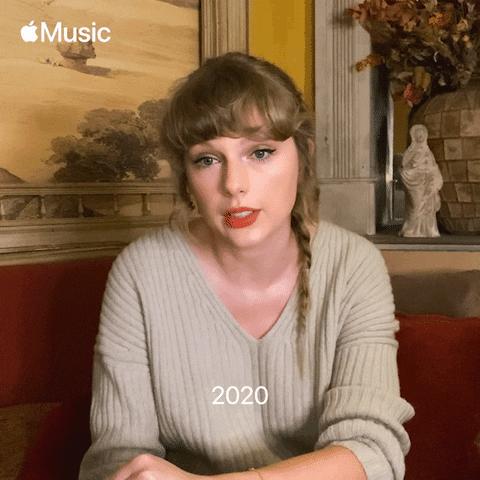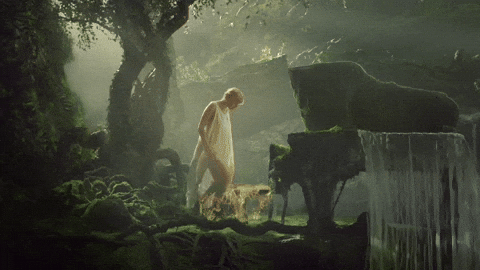When you are young they assume you know nothing.
New episode "cardigan" deep dive out now!
This week on AP Taylor Swift we deep dive into “cardigan” from folklore. We discuss the song’s nostalgia for teenage love and explore what it means to feel like an old cardigan–is that a good thing? We connect the song to last week’s Peter Pan discussion and the “teenage love trilogy” with august and betty. Is "Cardigan" simply a story of love lost and regained, or is it a meditation on self-discovery and growth? Find out when you listen to this week’s episode!
🎧 Listen above and ⬇️ scroll below to read Jodi’s extra credit about “cardigan” and its role as the first single from folklore!
🎥 Sneak Peek
Catch excerpts from the podcast and behind-the-scenes content on YouTube, TikTok, and Instagram!
🛍️ Shop With Us! Active Discount Codes
As we grow, we are so excited to announce new partnerships! Here you’ll find active discount codes available to our listeners.
📚 Bookshop.org Check out all our book recommendations by episode
🔉Libro.fm Support your local bookstore while listening to great audiobooks
Code: APTS
Offer: Get a free audiobook when you start a new membership (you must use this link!)
Receive 2 audiobook credits for $14.99 USD with your first month of membership.Code: APTS30
Offer: 30% off specific audiobooks in the AP Taylor Swift playlist.
✨ Krowned Krystals Make the whole place shimmer with the best rhinestones
Code: APTS
Offer: 10% off your order when you use the link above
🎒This Week’s Extra Credit - Brought to You by Jodi
An album’s first single is arguably its most important song. It not only signals an artist’s next move; it also introduces an entire era and sets the tone for everything to come on the album. Historically, Taylor Swift’s first singles have been…hit or miss as far as fan favorites go (“Me!”, anyone?). But they serve the purpose of the “first single” rule: 1) capture the musical style of the era to come, 2) tease out the album’s lyrical narrative or storyline, and 3) set the visual tone via the music video.
Taylor has said before that her record label often had a say (or even the final word?) on what would be an album’s first single. But for folklore, Taylor kept the entire project under wraps from her record label until it was ready to go. As shared in The Independent:
“There was no outside influence at all,” Dessner said. “In fact, nobody knew, including her label, until hours before it was launched. For someone who’s been in this glaring spotlight for 15 years, it’s really liberating to have some privacy and work on her own terms. She deserves that.”
This means that Taylor, alone, chose “cardigan” as the album’s first single. How does it line up according to the three criteria outlined above?
A sonic introduction to an indie-folk musical era
folklore was another huge musical shift for Taylor, this time moving from pop to indie-folk. While the album’s title folklore helps hint at the musical style to come, “cardigan” perfectly sets the stage for the rest of the album’s noted departure from Taylor’s three previous mainstream pop albums.
Musically, the song is described as “folk, soft-rock, indie-rock,” which captures the various genres explored across the album as a whole (“mirrorball” leans more soft rock/indie-folk, “seven” is clearly folk). The song sonically sets the stage for everything to come on the album, so there’s no musical shock and awe when you sit down to consume the rest of the album. It’s the perfect sonic appetizer, a taste of the meal to come.
Entering the world of folklore through folklore
Similar to the musical style shift, narratively and lyrically folklore serves as the first time Taylor explicitly told us she’s working outside her typical semi-autobiographical writing style. While her ability to tell a lyrical story has always been her strength, here it’s used to tell tales of others, whether fictional like the “teenage love triangle” in “betty,” “cardigan” and “august,” or historical like the tale of Rebekah Harkness in “The Last Great American Dynasty.”
Not only does “cardigan” begin our introduction to folklore with a non-autobiographical song, it also connects to two others on the album as mentioned above. Choosing a first single that is explicitly linked to other songs on the album further cements the need to look at the album as a whole, not just as individual songs. Taylor is telling us that while we can appreciate each song individually, we’ll see more and learn more if we listen and experience the album as a whole. While I believe this to be true of many of her albums (reputation is both about karma and love, has dark and light that can only be seen when you listen to the whole album, not to each song individually), I think it’s a particularly important statement to make on folklore, an album about stories, tales, and lore. Folklore is defined as “the traditional beliefs, customs, and stories of a community, passed through the generations by word of mouth.” It’s not one story passed down, it’s many stories. Selecting “cardigan” as the first single signals this is an album FULL of stories meant to be consumed, shared, and enjoyed together.
A song of the times, a video of the moment
I would be remiss to talk about folklore without mentioning the role of the pandemic on the album’s creation and its consumption.
As noted in Uproxx’s review of the album, folklore’s “turn away from mainstream pop isn’t as much of a statement as it is a necessity, reflecting the way the album was created and the times that it was created in.” folklore was created in isolation, with tracks and lyrics sent back-and-forth between Swift, Dessener, Antonoff, and other collaborators, without ever being in the same room. It was released in isolation, with no promotion or warning, simply an announcement via Instagram that a new album drops at midnight tonight. It was even consumed in isolation, with the world still largely locked down and disconnected from one another. It’s probably the only time ever that an artist could release an album and fans actually could consume the entire album, uninterrupted, with little distraction. In July 2020, the world needed distraction, fantasy, stories, and connection. We needed to be transported to a different world, to dive into the past, and discover new stories and adventures disconnected from the reality we were living. “cardigan” musically took us to a new era, lyrically transported us to a timeless story of lost love, and visually returned us to a world of fantasy and adventure. It was everything we needed at the moment.
The music video visually reflected the time during which was created, showing Taylor alone throughout the entire video. This dreamy, magical video captures both the solitary world of the pandemic (in a nightgown the whole video with no makeup? Sounds familiar!), while also transporting us to a mythical, ethereal landscape that’s both wondrous and frightening at the same time. The video shows nature taking over, first with a moss-covered piano, then at sea with Taylor struggling to hold on for dear life while being tossed about the waves. If that’s not how it felt to be alive during the pandemic—at the whim of the world, trying to hold on and find peace amid chaos—then I don’t know what pandemic you were in! While being thrown about the waves, Taylor holds onto the piano for dear life, much like she held onto creating new music to get herself through the early pandemic days. And, much like we all turned to the folklore album as a much-needed reprieve from the pandemic at the time of the album’s release. The video visually set the tone for the album, how it was created, and how we all may have felt while experiencing it.
***
I can’t listen to “cardigan” without feeling like I’m back in July 2020. The song immediately transports me to sitting in the car outside a café, mask still on from retrieving an iced chai latte, staring at the Instagram post announcing folklore’s arrival that evening. I listened to the album while swimming laps in the pool at my grandparent’s house, the one I’d grown up going to my whole life, that was now being sold after my grandfather died in February 2020. The entire album was both comforting and discomforting: a welcome distraction from 5 months at home, yet a melancholic reminder that the world is not what it once was; Gratitude for new music from my favorite artist, yet sadness that we may never get to see her perform these songs live in person ever again. “cardigan” itself is both comforting and discomforting—a song looking longingly at lost love, yet recognizing and acknowledging its ending. It was the perfect first single for folklore, for July 2020, and for an album that might never have existed were it not for the pandemic.






